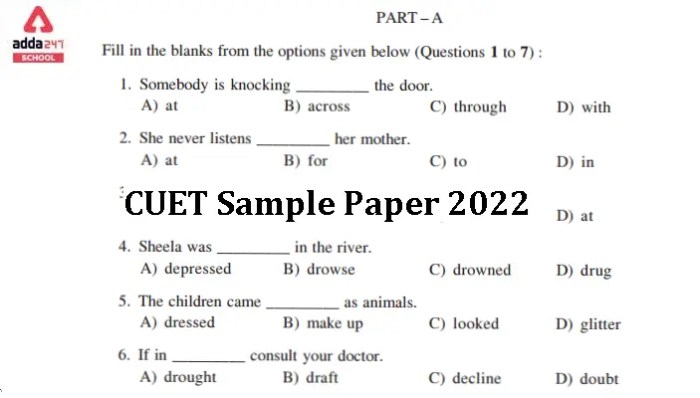The SkillsUSA Medical Math Practice Test is an invaluable resource for students preparing for the SkillsUSA medical math competition. This comprehensive guide provides an overview of the test, including its purpose, benefits, structure, and content. It also offers tips on how to prepare for the test and avoid common errors.
By utilizing the practice test and the strategies Artikeld in this guide, students can significantly increase their chances of success in the competition.
The SkillsUSA Medical Math Practice Test covers a wide range of medical math concepts and formulas, including medication dosage calculations, IV flow rate calculations, and body mass index (BMI) calculations. The practice test is designed to simulate the actual competition test, providing students with a realistic experience and helping them identify areas where they need additional practice.
Medical Math Practice Test Overview
A medical math practice test is an invaluable tool for healthcare professionals and students to assess their proficiency in medical mathematics and prepare for certification exams. By taking a practice test, individuals can identify areas of strength and weakness, gain confidence in their abilities, and improve their overall performance on the actual exam.
Medical math practice tests typically cover a range of concepts and formulas used in healthcare settings, including:
- Drug calculations (dosage, concentration, and administration rates)
- Fluid and electrolyte balance
- Body mass index (BMI) and body surface area (BSA)
- Blood glucose monitoring
li>Vital signs interpretation
To prepare for a medical math practice test, it is recommended to review the relevant concepts and formulas, practice solving sample problems, and utilize online resources or study guides. This will help build a strong foundation and increase confidence in tackling the test.
Practice Test Structure

Medical math practice tests typically consist of multiple-choice questions that cover a variety of medical math topics. The number of questions and time limit can vary depending on the specific test, but most tests range from 50 to 100 questions and have a time limit of 60 to 90 minutes.
The scoring system for medical math practice tests is usually based on the number of correct answers. The results are interpreted by comparing the individual’s score to the established passing score or to the performance of other test takers.
Example practice test questions:
- A patient weighs 150 pounds and has a BSA of 1.7 m2. What is the patient’s ideal body weight (IBW) using the Devine formula?
- A medication order is for 100 mg of a drug to be given every 6 hours. If the available medication is a 20 mg/mL solution, how many milliliters of the solution should be administered per dose?
- A patient has a blood glucose level of 120 mg/dL. Convert this value to mmol/L.
Key Concepts and Formulas
Drug Calculations, Skillsusa medical math practice test
- Dosage calculation: Dose = (Desired dose × Patient’s weight) / Drug strength
- Concentration calculation: Concentration = (Amount of drug) / (Volume of solution)
- Administration rate calculation: Rate = (Volume of solution) / (Time)
Fluid and Electrolyte Balance
- Fluid balance: Intake – Output = Fluid balance
- Sodium balance: Sodium intake – Sodium output = Sodium balance
- Potassium balance: Potassium intake – Potassium output = Potassium balance
Body Mass Index (BMI) and Body Surface Area (BSA)
- BMI calculation: BMI = Weight (kg) / Height (m2)
- BSA calculation: BSA = (Weight (kg) × Height (cm)) / 3600
Blood Glucose Monitoring
- Blood glucose conversion: 1 mg/dL = 0.0555 mmol/L
- Insulin dose calculation: Insulin dose = (Blood glucose level – Target blood glucose level) × Insulin sensitivity factor
Vital Signs Interpretation
- Normal body temperature: 98.6°F (37°C)
- Normal heart rate: 60-100 beats per minute
- Normal respiratory rate: 12-20 breaths per minute
Problem-Solving Techniques

Effective problem-solving techniques for medical math calculations include:
- Read the problem carefully and identify the relevant information.
- Convert all units to the same system (e.g., metric or imperial).
- Use the appropriate formula or equation to solve the problem.
- Check the answer for reasonableness and accuracy.
Practice exercises with solutions:
- A patient weighs 70 kg and is prescribed a medication that requires a dose of 150 mg/kg/day. How many milligrams of the medication should be administered per day?
- A medication order is for 500 mg of a drug to be given every 8 hours. If the available medication is a 100 mg/mL solution, how many milliliters of the solution should be administered per dose?
- A patient has a blood glucose level of 150 mg/dL. Convert this value to mmol/L.
Common Errors and Pitfalls

Common errors and pitfalls that students make when taking medical math tests include:
- Using the wrong formula or equation
- Incorrectly converting units
- Misplacing the decimal point
- Rounding errors
To avoid these errors, it is important to:
- Review the relevant formulas and equations before taking the test.
- Pay attention to the units of measurement and convert them correctly.
- Be careful when placing the decimal point.
- Check the answer for reasonableness and accuracy.
Time Management and Test-Taking Strategies

Effective time management and test-taking strategies for medical math practice tests include:
- Prioritize questions based on difficulty and importance.
- Allocate more time to questions that are worth more points.
- Skip difficult questions and return to them later if time permits.
- Use scratch paper to work out calculations.
- Review the test before submitting it to check for errors.
Clarifying Questions: Skillsusa Medical Math Practice Test
What is the purpose of the SkillsUSA Medical Math Practice Test?
The SkillsUSA Medical Math Practice Test is designed to help students prepare for the SkillsUSA medical math competition. It provides students with a realistic experience of the actual competition test and helps them identify areas where they need additional practice.
What types of medical math problems are typically covered on the practice test?
The practice test covers a wide range of medical math concepts and formulas, including medication dosage calculations, IV flow rate calculations, and body mass index (BMI) calculations.
How can I prepare for the practice test?
There are several ways to prepare for the practice test. Students can review the medical math concepts and formulas that are covered on the test, practice solving medical math problems, and take practice tests under timed conditions.




